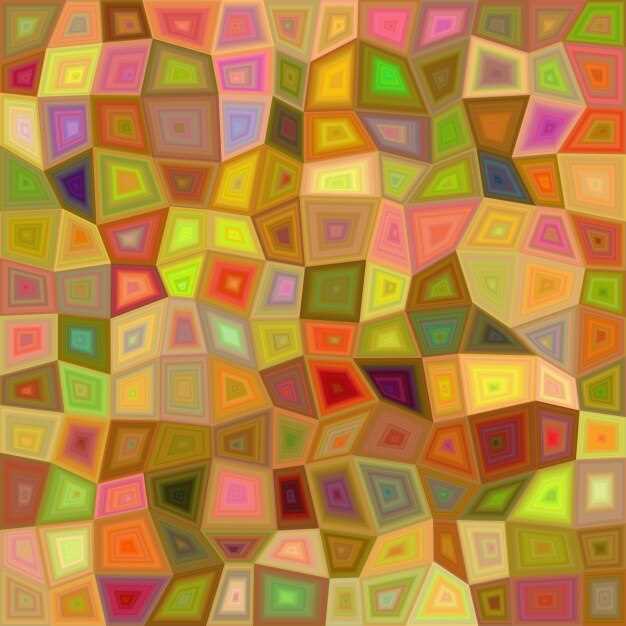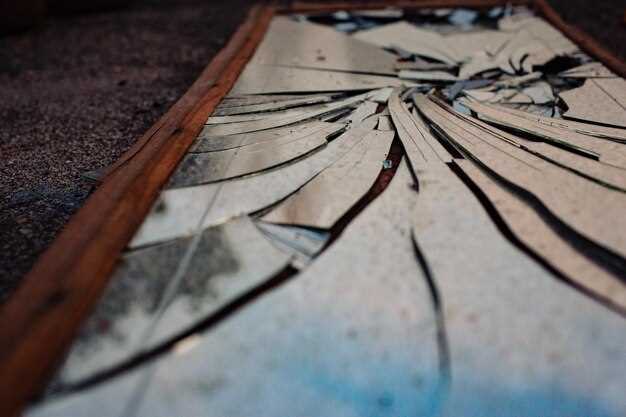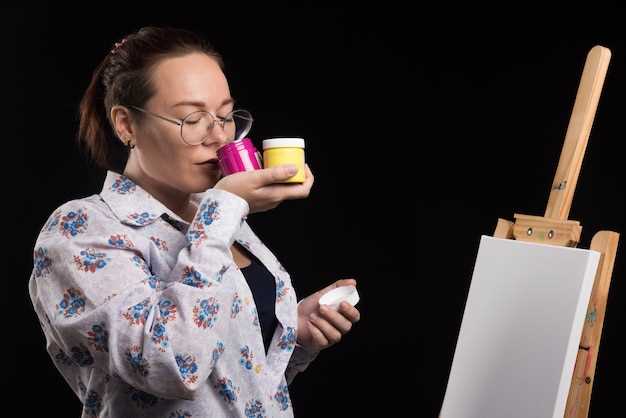Begin your exploration of mosaic glass art by understanding its rich history, which spans thousands of years across various cultures. From ancient Rome to contemporary settings, mosaic glass has been a significant form of artistic expression. Each era contributed unique styles and techniques, forming a legacy that influences modern artists today.
To appreciate mosaic glass art fully, familiarize yourself with the basic techniques. Traditional mosaic art involves cutting glass into small pieces and adhering them to a backing surface, a method that allows for intricate designs and patterns. Beginners can experiment with simpler techniques like the direct method, where pieces are set right onto the surface, or the indirect method, which involves assembling the design on a substrate and then transferring it.
Tapping into historical styles can inspire your creations. The Byzantine mosaics, for example, are known for their use of gold and colored glass, while contemporary artists often blend glass with other materials to push the boundaries of traditional techniques. Seek out workshops or classes nearby to gain hands-on experience and connect with others who share your enthusiasm for this artistic medium.
The Origins of Mosaic Glass Art: A Historical Overview

Mosaic glass art has its roots in ancient civilizations, where craftsmen combined colored glass pieces to create intricate designs. Around 500 BC, the first evidence of mosaic glass appeared in what is now Iraq, where artisans used glass tiles in their creations.
The use of glass in mosaics expanded during the Hellenistic period, particularly in Greek and Roman cultures. Artisans crafted detailed scenes and images for decorative purposes, employing techniques that would influence future generations. Roman mosaics often featured mythological themes and were used to adorn public buildings and private homes.
- Ancient Rome: By 100 AD, glass mosaics became popular, with elaborate floors and walls displaying intricate patterns.
- Byzantine Influence: In the 4th century, Byzantine artists introduced gold and silver glass, enhancing the visual richness of mosaics.
- Islamic Art: From the 7th century onwards, Islamic cultures embraced glass mosaics, incorporating geometric designs and calligraphy.
Throughout the Middle Ages, the craft of mosaic glass experienced fluctuations. It saw a revival during the Renaissance as artists like Michelangelo and Raphael showcased the medium in their works. This period marked a significant shift in the use of glass, leading to more complex compositions and innovative techniques.
- Experimentation with materials led to the creation of more durable tiles.
- Artists began layering glass pieces, allowing for depth and texture.
- The introduction of new colors expanded the palette available to artisans.
In the 19th century, the Industrial Revolution brought advances in glass production, making mosaic glass art more accessible. Today, artists continue to draw inspiration from these historical styles while incorporating contemporary techniques that honor the craft’s rich legacy.
Mosaic glass art has traveled through time, adapting yet retaining its core charm. Understanding its origins provides insight into its modern interpretations and continued relevance in art today.
Key Cultures that Contributed to Mosaic Techniques

Ancient cultures played a significant role in developing and refining mosaic techniques that still influence artists today. Here are the primary contributors:
Roman Contributions
- Romans popularized the use of mosaics in public spaces, such as baths and villas, showcasing elaborate scenes from mythology and daily life.
- They advanced techniques by using small, colored stones called tesserae, creating intricate patterns and designs.
- Roman mosaics often featured naturalistic styles, emphasizing depth and perspective, which enhanced visual storytelling.
Byzantine Innovations
- Byzantine artists elevated mosaic art by incorporating gold and glass tesserae, resulting in shimmering effects and a unique aesthetic.
- Religious themes dominated Byzantine mosaics, with many artworks found in churches, helping to illustrate spiritual narratives.
- They refined the technique of layering, granting increased depth and texture to their compositions.
Islamic Influence
- Islamic cultures integrated intricate geometric patterns and calligraphy, pushing the boundaries of traditional mosaic designs.
- They utilized ceramics and glass to create elaborate motifs, often seen in mosques and palaces.
- This period emphasized symmetry and repetition, which became hallmark features of Islamic mosaic art.
Each culture integrated its own artistic language, techniques, and materials, contributing to the rich tradition of mosaic art that flourishes today.
Understanding Different Types of Glass Used in Mosaics

Choosing the right glass for mosaic art significantly influences the final outcome. Various types of glass offer distinct qualities that enhance creativity and durability. Here are the main types of glass commonly used in mosaics:
| Type of Glass | Description | Usage |
|---|---|---|
| Stained Glass | Translucent glass colored by adding metal oxides during production. | Perfect for creating intricate designs and allowing light to filter through. |
| Fused Glass | Created by heating glass pieces until they soften and fuse together. | Ideal for making custom shapes and textures. Often used for dimensional effects. |
| Mosaic Glass Tiles | Pre-cut tiles specifically designed for mosaics in various colors and sizes. | Streamlines the process and provides consistent quality. Excellent for beginners. |
| Mirror Glass | Reflective glass that adds depth and brightness to designs. | Use in applications where a reflective surface is desired, like accent pieces. |
| Opaque Glass | A solid, non-transparent glass that doesn’t allow light to pass through. | Great for bold colors and strong contrasts in designs, providing a striking look. |
When selecting glass, consider factors like the project’s location, exposure to elements, and desired color effects. Experimenting with different types will expand artistic possibilities and enhance the mosaic’s visual appeal. Each type of glass offers unique benefits, allowing artists to explore various techniques and styles.
Cultivating Inspiration: Famous Mosaic Glass Artists
Explore the mesmerizing works of renowned mosaic glass artists to ignite your creativity. These talented individuals have made significant contributions to the art form, demonstrating different styles and techniques that can inspire your own creations.
-
Giovanni Battista Piranesi: Known for his intricate engravings of ancient Rome, Piranesi’s mosaic patterns often influenced glass artists. His work displayed strong geometric designs that can be adapted for contemporary glass mosaics.
-
Antonio Gaudí: This legendary architect integrated mosaic glass into his buildings, using colorful shards to create unique textures. His works, such as the famous Park Güell in Barcelona, offer a dynamic approach to color and form.
-
Louis Comfort Tiffany: A pioneer of the Art Nouveau movement, Tiffany elevated stained glass with his signature opalescent glass. His innovative techniques in layering and cutting glass pieces inspired countless mosaic artists.
-
Isabell K. W.: A contemporary mosaic artist known for her intricate, nature-inspired designs. Her fusion of colors and innovative use of materials, including glass and stone, showcases a modern take on traditional techniques.
-
Ruth Bader: Ruth’s large-scale mosaic installations, often integrating local themes, emphasize community connection. Her use of recycled glass adds an eco-friendly twist that attracts attention and admiration.
Study their techniques, styles, and philosophies to find inspiration for your own mosaic glass projects. Each artist brings a unique vision, encouraging exploration and experimentation in your work.
Engaging with their art can lead to discovering fresh perspectives, motivating you to push your creative boundaries. Let their legacies guide your journey into the captivating world of mosaic glass art.
Essential Tools for Creating Mosaic Glass Art
Gathering the right tools streamlines the process of creating mosaic glass art. Here’s a list to equip you for your next project:
| Tool | Purpose |
|---|---|
| Glass Cutter | Allows you to cut glass into desired shapes and sizes with precision. |
| Score and Snap Tool | Aids in breaking scored glass along a straight line for clean edges. |
| Safety Glasses | Protects your eyes from glass shards during cutting and handling. |
| Cutting Mat | Provides a safe surface for cutting glass, protecting both the tools and the workspace. |
| Glue or Adhesive | Secures glass pieces to a base; PVA or epoxy works well. |
| Grout | Fills gaps between glass pieces, enhancing stability and aesthetics. |
| Grouting Tools | Facilitates the application and smoothing of grout for a polished finish. |
| Tweezers | Enables precise placement of smaller glass pieces. |
| Sponge | Used for cleaning excess grout from glass surfaces. |
| Sealer | Protects the finished artwork from moisture and enhances durability. |
By utilizing these tools, you ensure a smoother workflow and higher-quality results in your mosaic glass projects. Each item on this list plays a unique role in transforming your creative vision into reality.
Step-by-Step Guide: How to Design a Mosaic
Begin with sketching your mosaic design on paper. Choose a theme that inspires you, whether abstract or representational. Pencil in various shapes and forms that will guide your placement of materials.
Next, select your materials. Glass, tiles, pebbles, or ceramics work well. Consider color schemes that complement each other. Gather tools such as a cutter, adhesive, and grout to aid in your construction.
Prepare your base. Use a sturdy surface like plywood or cement board. Draw the outline of your design on the base using a pencil or chalk for visibility during the application process.
Cut your chosen materials into pieces based on your design. Keep shapes varied, as this adds interest. Wear safety gear when cutting to protect your eyes and hands.
Begin placing the pieces on the base, starting from the center or the edges, depending on your design. Use adhesive to secure each piece. Press firmly to ensure good adhesion, and leave small gaps for grout.
Once all pieces are in place, allow the adhesive to dry completely according to product instructions. This step is crucial for a solid finished piece.
Apply grout over the entire mosaic, pressing it into the gaps between pieces. Use a wet sponge to wipe off excess grout from the surface of the pieces. This will prevent a foggy appearance once dried.
After the grout has cured, clean the mosaic again with a damp cloth to reveal the colors and designs. Seal your mosaic with a clear sealant if intended for outdoor display, ensuring it withstands weather elements.
Finally, step back and admire your creation. Each design reflects personal style and craftsmanship, making it a unique piece of art. Enjoy the satisfaction of your hard work and creativity.
Selecting the Right Adhesives for Glass Mosaics
Choose a high-quality adhesive specifically designed for glass mosaics to ensure strong bonds and long-lasting results. Two common types are thin-set mortar and adhesive glue. Thin-set mortar works well for larger projects and provides durability, while adhesive glue is suitable for smaller applications and lightweight pieces.
Thin-Set Mortar
This option is ideal for both indoor and outdoor projects. It is water-resistant and can handle temperature fluctuations. For outdoor mosaics, select a modified thin-set to better withstand environmental changes. Always mix thin-set according to the manufacturer’s instructions to achieve the right consistency, which allows easy application and better adhesion.
Adhesive Glue
Use waterproof adhesive glue for smaller projects or delicate designs. It dries clear, making it a perfect choice when you want the focus on the glass itself. Look for glues that specifically state compatibility with glass to ensure optimal adhesion. For best results, apply the glue on both the mosaic piece and the substrate to create a stronger bond.
Remember to allow adequate drying time as outlined by the manufacturer. This ensures that your mosaic remains intact and secure in its final position. Careful selection of adhesives directly impacts the quality and longevity of your glass mosaics.
Grouting Techniques for Durable Mosaic Glass Art
Choose the right grout for your mosaic glass art to ensure durability. An epoxy grout offers superior stain resistance and strength, making it ideal for outdoor projects or high-traffic areas. Mix the grout according to the manufacturer’s instructions to achieve a consistent texture.
Apply the grout using a rubber float. Hold the float at a 45-degree angle and press the grout into the spaces between the glass pieces. Ensure that each joint is filled adequately without leaving air pockets. This technique helps to maintain the integrity of your artwork.
After filling the joints, remove excess grout from the surface by scraping it away with the float. Be cautious not to disturb the grout in the joints. Allow the grout to set for about 15 to 30 minutes, based on the type used.
Once the grout begins to harden, use a damp sponge to gently wipe the surface of the glass. Rinse the sponge frequently to avoid smearing grout on the tiles. This step enhances the shine of the glass pieces while maintaining clean lines in the grout joints.
After the grout has fully cured, which can take up to several days, consider applying a sealer to protect your mosaic from stains and moisture. Select a sealer that is compatible with your specific grout type and follow the application instructions provided by the manufacturer.
Regular maintenance involves cleaning the surface regularly with a gentle cleanser to preserve the appearance of your mosaic. Avoid harsh chemicals that could damage the grout or the glass.
Color Theory in Mosaic Glass: Choosing the Right Palette
Begin with a color wheel as your foundation. Select a harmonious color scheme using complementary, analogous, or triadic colors. Complementary colors, such as blue and orange, create a striking contrast that draws attention. Analogous colors, found next to each other on the wheel, offer a soothing blend, perfect for serene landscapes. Triadic combinations, like red, yellow, and blue, provide balance and vibrancy.
Consider the mood you want to convey. Warm colors like reds and yellows evoke energy and excitement, while cool colors such as blues and greens inspire calmness and relaxation. Think about how these feelings align with your artistic vision.
Experiment with saturation and brightness. A monochromatic approach using varying shades of a single color can create depth and intrigue. Darker shades can add drama, while lighter tints can enhance a sense of space and light.
Texture plays a role too. Matte and glossy finishes reflect light differently. Incorporate clear or frosted glass to add contrast and dimension to your mosaic, enhancing the overall visual experience.
Test your palette. Create small samples to see how colors interact under different lighting conditions. Natural light can alter your perception, so make adjustments as needed. Keep a color journal, documenting combinations that resonate with you.
Finally, trust your instincts. Your unique creative voice will guide you in making choices that reflect your individuality. Enjoy the process of exploration as you curate your mosaic colors!
Innovative Techniques: Experimenting with Texture and Shape
Incorporate natural materials such as cheesecloth, sand, or rice paper into your mosaic design. These elements introduce intriguing textures that enhance visual interest. For example, pressing cheesecloth into wet adhesive creates delicate patterns that catch the light differently than traditional glass pieces.
Consider varying the thickness of your glass tiles to manipulate the overall depth of the piece. Using both thick and thin tiles allows you to create a sense of dimension. Layering thinner pieces over thicker ones can produce captivating shadows and highlights, transforming your mosaic into a three-dimensional artwork.
Explore unusual shapes beyond traditional squares and rectangles. Using triangular, circular, or even freeform tiles can break the monotony and add a dynamic quality to your design. Experiment with cutting glass into organic shapes; this hand-crafted approach evokes a sense of flow and movement.
Integrate found objects like seashells, stones, or beads into your mosaics. These mixed materials not only provide a textural contrast but also add personal significance and storytelling to your art. Arrange them thoughtfully to complement the glass elements, ensuring a harmonious balance within the composition.
Utilize layering techniques with adhesive to build texture. Apply a base layer of thin glass tiles, then add a second layer with thicker gems or tiles in varying orientations. This method can create a rich, textured surface reminiscent of natural formations.
Experiment with color gradients by arranging glass pieces in a way that transitions from one hue to another. Use a combination of opaque and transparent pieces to enhance this effect, allowing light to play differently across the surface and creating a sense of depth.
Lastly, don’t shy away from mixing painting with your mosaic work. Apply glass paint or enamel to certain tiles before setting them in place. This technique can introduce additional colors and patterns, allowing for even more creativity in your design.
Preserving and Maintaining Mosaic Glass Artwork
Regular dusting with a soft, dry cloth prevents dirt buildup on your mosaic glass pieces. For deeper cleaning, use a damp cloth with mild soap and avoid abrasive materials that could scratch the surface.
Check for loose tiles or cracks periodically. If you find any, use an appropriate adhesive to reattach or seal them promptly to prevent further damage.
Avoid placing mosaic glass artwork in direct sunlight for extended periods. UV rays can fade colors and degrade the materials. Consider using protective coatings designed for glass to enhance durability and reduce fading.
Maintain a stable environment. Fluctuating temperatures and humidity levels can affect both the adhesive and the glass. Aim to keep your artwork in a controlled climate, ideally around 70°F and 50% humidity.
If your glass artwork is outdoors, protect it from harsh weather conditions with appropriate coverings during extreme weather events. Regularly inspect outdoor pieces for signs of wear or damage.
Consider applying a sealant every few years to protect grout and adhesive from moisture and staining. Use products specifically meant for mosaic applications to ensure compatibility and longevity.
Document your artwork’s condition with photographs. This can help when assessing changes over time or if repairs become necessary.
Stay informed about artists’ and restorers’ best practices. Joining a community or online forum can provide valuable insights and tips for ongoing care techniques.
Exhibiting and Selling Your Mosaic Glass Creations
Participate in local art fairs and craft shows to showcase your mosaic glass art. These events provide an excellent platform to connect directly with potential buyers and fellow artists. Set up an eye-catching display that highlights the intricacies of your work, ensuring each piece is well-lit and clearly presented.
Utilize social media to reach a broader audience. Share high-quality images of your creations, behind-the-scenes videos, and stories about your process. Engage with your audience by responding to comments and sharing updates, making them feel part of your artistic journey.
Consider building an online store through platforms like Etsy, Shopify, or your own website. Optimize your product listings with clear descriptions, dimensions, and pricing to help customers make informed decisions. Offer different payment options to accommodate various buyers.
Collaborate with local galleries or boutique shops to display your work. Establish partnerships that allow you to reach new audiences while benefiting from their established customer bases. Ensure that your pieces are accompanied by informative tags or cards, detailing your inspiration and the techniques used.
Engage in art competitions and exhibitions to gain recognition. Winning or being featured can enhance your credibility and attract interested collectors. Always keep a portfolio of your best work handy for any sudden opportunities that may arise.
Network within the art community. Attend workshops and seminars not only to improve your skills but also to meet potential buyers and other artists. Sharing experiences can lead to valuable insights and collaborations that may enhance your visibility and sales.
Finally, maintain transparency about pricing and the story behind each piece. Customers appreciate authentic connections with the artists, leading to more organic sales and lasting relationships with your audience.
Video:
Beginner Introduction to Stained Glass Mosaics Video, Part One
Beginner Introduction to Stained Glass Mosaics Video, Part One by Make it Mosaics: Bonnie Fitzgerald & Kim Wozniak 79,992 views 9 years ago 3 minutes, 8 seconds
Q&A:
What is the historical significance of mosaic glass art?
Mosaic glass art has a rich history that dates back to ancient civilizations such as the Romans and Byzantines. It was often used in religious and public buildings to create stunning visual narratives. The intricate designs and use of colored glass conveyed not only beauty but also spiritual and cultural messages. This art form has evolved over centuries, influencing various artistic movements and techniques, making it a key aspect of both decorative and functional art.
What techniques are commonly used in creating mosaic glass art?
Mosaic glass art typically employs several techniques, including the direct method and indirect method. In the direct method, pieces of glass are adhered directly onto a surface, allowing for immediate visualization. The indirect method involves assembling pieces on a temporary surface before transferring them to the final location. Additionally, different materials such as adhesives and grout play a crucial role in ensuring durability, while artists may use tools like nippers and cutters to shape the glass before application.
How has modern technology impacted the creation of mosaic glass art?
Modern technology has significantly influenced mosaic glass art by introducing new tools and materials. Digital cutting tools allow for precise shaping of glass pieces, while advanced adhesives help improve durability and ease of use. Additionally, artists can create more complex designs by utilizing computer-aided design (CAD) software, allowing them to visualize their work before construction. However, many traditional methods and craftsmanship are still valued and practiced by artists today, blending old techniques with new innovations.
What materials are typically used in mosaic glass art?
The primary material used in mosaic glass art is, of course, glass. Various types, including stained glass, recycled glass, and colored glass, are commonly utilized. Additionally, artists may use stones, ceramics, or other materials to complement the glass and add texture to their work. The choice of materials can significantly affect both the aesthetic and structural qualities of the finished piece, making selection a crucial step in the creative process.
Can you provide examples of famous mosaic glass art pieces or artists?
Several renowned artists and famous works have made significant contributions to mosaic glass art. One example is Antoni Gaudí, whose use of colorful mosaics in structures like Park Güell in Barcelona showcases the art form’s potential for integrating with architecture. Another notable artist is Marc Chagall, who created stunning stained glass windows in cathedrals, blending traditional techniques with his unique style. These examples illustrate the versatility and enduring appeal of mosaic glass art through the ages.



